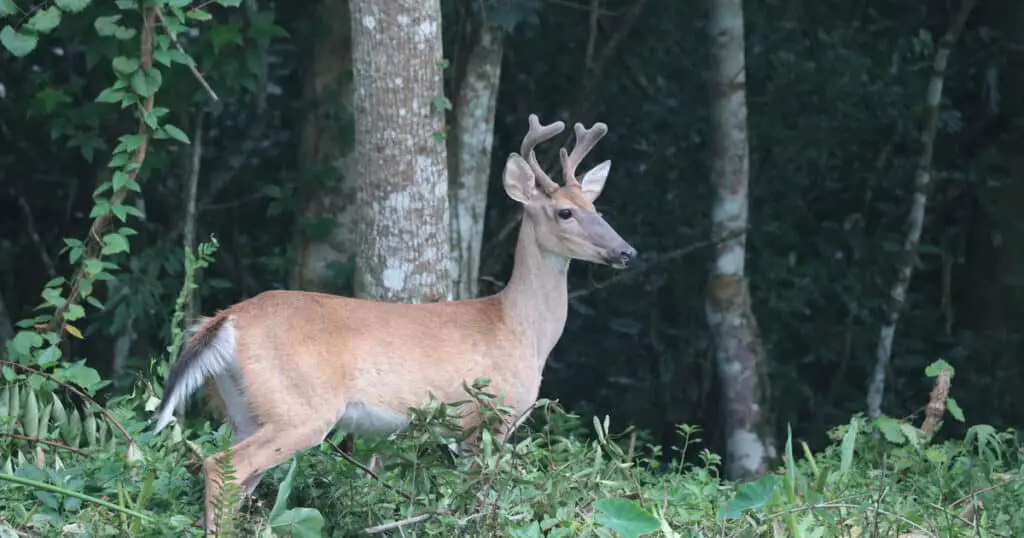If you’ve ever seen a deer with enormous antlers, you may be shocked to learn that antlers are shed and grow back each and every year of the animal’s life. Once a male deer is old enough to have the testosterone necessary to start growing antlers, they will complete this antler shedding and regrowth process annually. Do deer antlers grow back annually? Yes they do, and in today’s article we’ll explain everything you need to know about how antlers grow, why they are shed every year, and the factors which can impact healthy antler growth.
Antlers grow at specific speeds, and there are certain factors that determine how fast a deer’s antlers will grow, why male deer need antlers, and more.
Let’s start with the basics about antler growth.
How Fast Can Deer Antlers Grow?
A deer’s antlers can grow extremely quickly. In fact, there might be as much as a half inch of growth every day they grow each year.
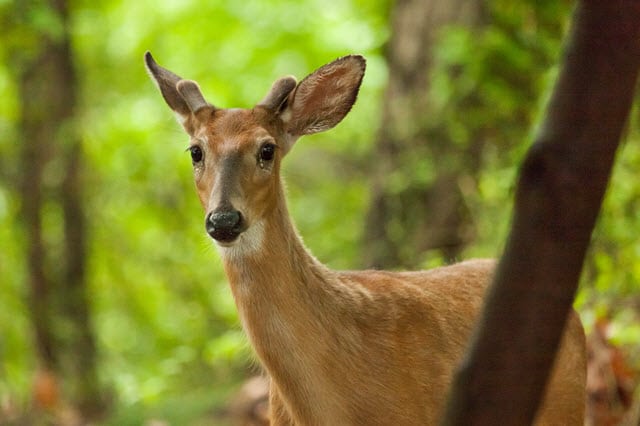
Deer antlers grow from an area of the head called the pedicles. These are areas of the skull that are relatively soft. In the early parts of the spring months, a couple of tiny bone stubs will appear here. They will be enrobed in velvet.
This velvet is fundamental in the process of giving the antler stubs enough oxygen and blood. Without enough of these nutrients, the antlers won’t be able to develop and grow as they should.
Eventually, the deer has to get rid of the velvet on their antlers in a bloody process called velvet shedding.
Rubbing its antlers on trees is one of the things deer will do to help remove the velvet at the right time each year.
It’s a necessary part of the process and allows deer to have hard antlers for the mating season when males compete with other bucks and stags for female deer.
What Affects Antler Growth?
While a deer’s antlers grow back every year, there are certain factors that affect how well and how large they grow. Some of the factors that play a part in antler growth include hormones, age, genetics, and nutrition.
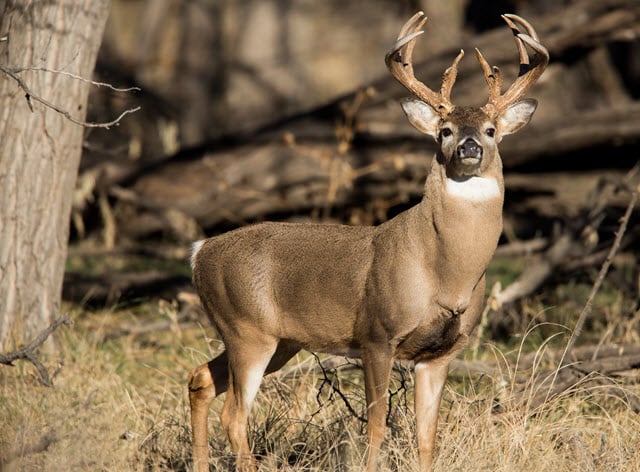
Disease and injury are factors that may play a specifically negative role in the process.
The male deer’s hormones levels and fluctuations have an effect on antler growth. Nutrition is key to antler growth, too.
A male deer needs enough of all the necessary nutrients needed for its health in order to ensure proper antler growth. Genetics are another factor in antler growth.
It’s uncertain what the exact impact is and how it will affect each individual animal, but genes certainly have an impact.
When do Deer Start Growing Antlers?
While male deer shed and grow new antlers ever year, they only start this lifelong process at a certain age. It’s when they’re approximately 10 months old a male deer (also called a buck) will start to grow antlers.
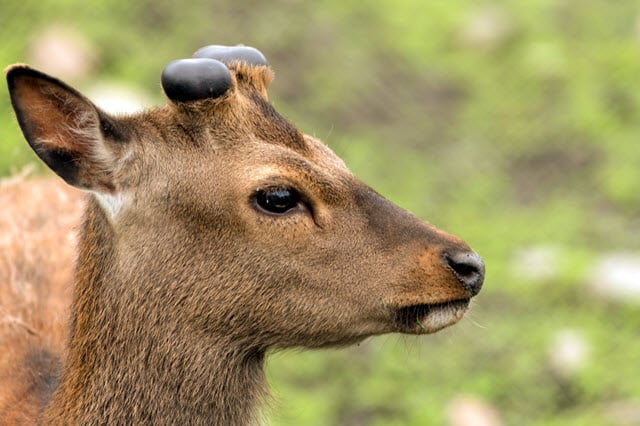
Once deer have started growing antlers, they will shed their antlers each year, starting to grow their new pair each year in the late spring months. When the days start getting a bit longer in April, deer antlers tend to start growing.
At the very beginning, there will be a bud that develops on the pedicel on the deer’s head. The first brow tine or tine will usually appear (start to show up or split off) inside the first month.
The second tine will usually appear around one month later. Full development of the antlers will usually have taken place in around four months.
A great deal of antler growth happens in the summer. During that time, male deer typically stay with groups exclusive to bachelors. They don’t tend to move around very much.
More About The Timeline of Antler Growth in Deer
During antler growth, they have enormous numbers of blood vessels and nerves. The velvet that cover the antlers are a hairy type of skin. When the later part of the summer arrives, a male deer’s levels of testosterone increase.
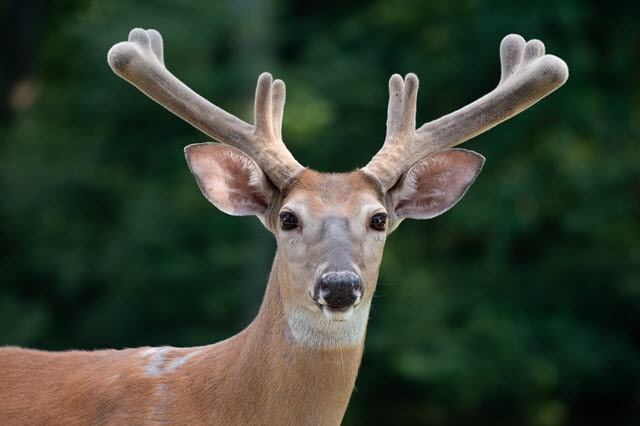
The form of the antlers gets fully developed and filled in, and they start to harden. When the time comes for the blood vessels to deactivate and stop giving nourishment to the velvet, the velvet dehydrates and will eventually fall off the antlers.
The exact time when a male deer’s antlers will be fully developed may depend upon the area of the country (or world) where it lives.
For example, most bucks will have a fully hardened antler by the time the middle of September (specifically September 15) arrives.
The male deer will keep its hard antlers all through the most important parts of the breeding season. They will keep their antlers until the later part of the fall or early part of the winter.
Once the correct time of year arrives, deer with antlers will start going through the shedding process, and then the antlers will re-grow for the following season.
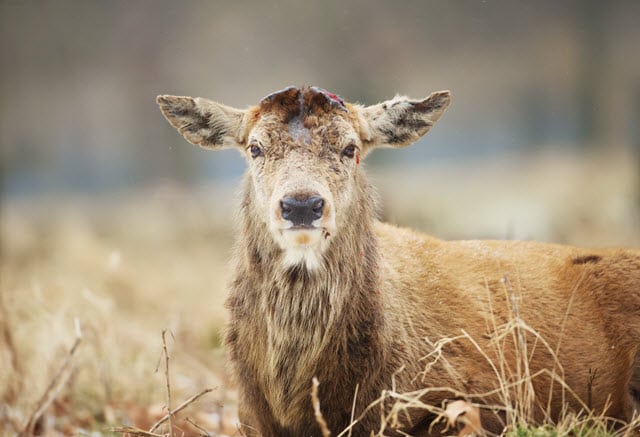
Why Do Deer Need Antlers?
In most deer species, only male deer have antlers (the Reindeer is an exception where females actually do grow antlers). They have antlers for several different purposes. Male deer use antlers for:
- Showing dominance over other males
- Fighting other males
- Signifying the health and dominance of a male
- Help intimidate and fight off potential predators
How do Antlers Show Dominance Over Other Males?
There are two ways that male deer need their antlers to show dominance over other males. The appearance of large antlers will help to keep animals with smaller antlers away.
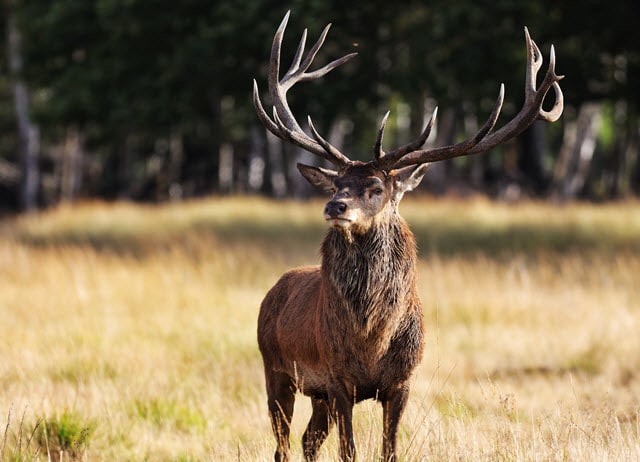
Also, large antlers may be a sign of general health and strength that will be intimidating to potential rivals.
How do Deer Use Antlers in Fighting?
If two male deer end up fighting over territory or females, they will use their antlers. And yes, it’s true that deer may use antlers to intimidate and even fight off predators if they have to.
Of course, they won’t do this unless they feel they have to. That is because they don’t want to risk potential injury and damage to their antlers.
How do Antlers Indicate Health and Quality
As nutrients and health impact antler growth, large and abundant antlers can signal to a female that a male deer is healthy and viable.
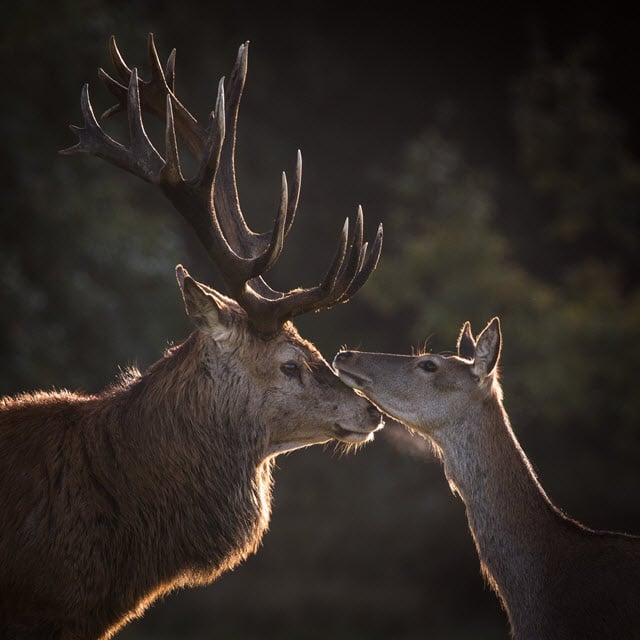
This may make her prefer that individual deer to reproduce, as he may make her offspring more likely to be healthy and live long lives.
Antler Growth and the Reproductive Cycle of Deer
Deer have their breeding season in the fall months. It’s crucial that male deer have their antlers fully developed by this point, as they need them to fight other males and get the right to breed.
Once a male deer has triumphed over another male, they will accompany the female in question until she is able to breed. After breeding, there is an approximately six-month long gestation period.
After the deer’s mating season is over and winter arrives, the male deer’s antlers will start to get weaker. This is important to prepare them for being shed during the spring.
An area called the abscission line is key to this process. This is the line connecting the antler and the pedicle, and it begins to demineralize and become weaker.
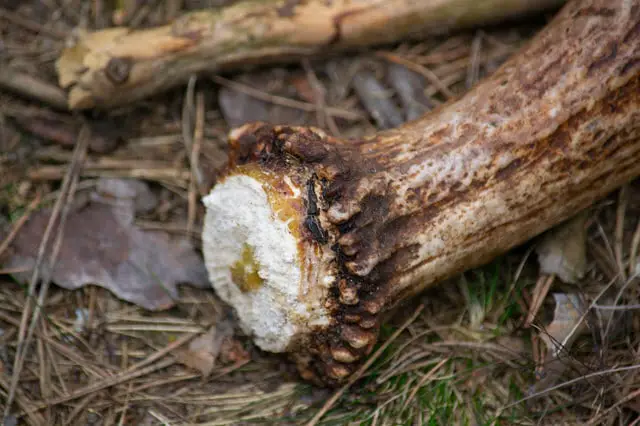
By the time the late winter arrives, male deer are getting ready to shed their antlers. Sometimes they will actually shed them in the later winter, but most of the time it’s in the early spring.
Yes, Deer Antlers Do Grow Back Annually
It’s true that male deer will shed and grow back their antlers every year. This is an intricate process that depends on several different factors that we’ve described here.
The growth of antlers depends on testosterone, and that is why only male deer grow them. In order for the antlers to grow fully and reach their greatest possible size, the male deer must have proper nutrition and stay healthy.

